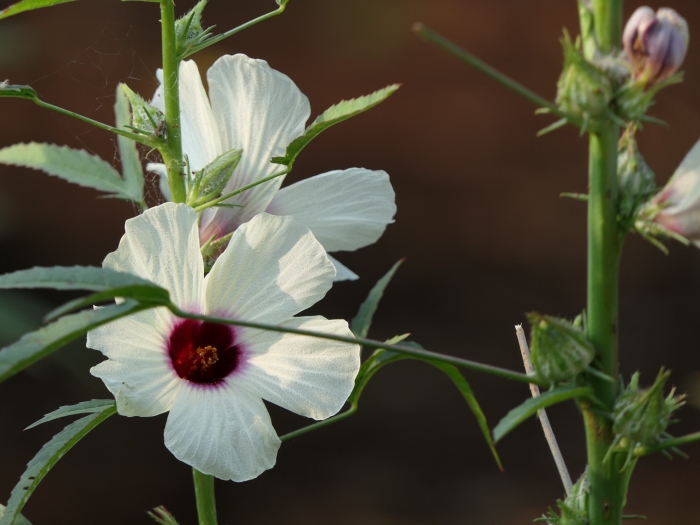Kenaf
(Hibiscus cannabinus)
Kenaf (Hibiscus cannabinus)
/
/

Dinesh Valke
CC BY-SA 2.0

















































Estimated Native Range
Summary
Kenaf is valued for its fibrous stems used in the production of paper, textiles, and biodegradable plastics. Its flowers add ornamental value, and the plant is sometimes grown in gardens for its aesthetic appeal and as a conversation piece due to its unique appearance. In cultivation, Kenaf requires full sun or part shade and adapts to a range of soil drainage conditions, from slow to fast. It is relatively easy to maintain, but gardeners should be aware that it may require staking due to its height. Kenaf has no major disease problems, but it can be susceptible to root rot in overly wet conditions. It is not typically invasive outside its native range, but care should be taken to prevent unwanted spread in optimal growing conditions.CC BY-SA 4.0
Plant Description
- Plant Type: Herb
- Height: 2-6 feet
- Width: 1-3 feet
- Growth Rate: Rapid
- Flower Color: Purple, White, Yellow
- Flowering Season: Summer, Fall
- Leaf Retention:
Growth Requirements
- Sun: Full Sun, Part Shade
- Water: Medium
- Drainage: Slow, Medium, Fast
Common Uses
Bee Garden, Bird Garden, Butterfly Garden, Edible*Disclaimer: Easyscape's listed plant edibility is for informational use. Always verify the safety and proper identification of any plant before consumption., Hummingbird Garden, Low Maintenance, Showy Flowers
Natural Habitat
native to tropical and subtropical regions of Africa, thriving in savannas, grasslands, and disturbed areas
Other Names
Common Names: Deccan Hemp, Java Jute, Brown Indianhemp, Bokai, Takataka, Uruberwa, 洋麻;鐘麻, Indian-Hemp, Bimli-Jute, Kenaf
Scientific Names: , Hibiscus cannabinus, Hibiscus radiatus, Hibiscus asper, Hibiscus vitifolius, Hibiscus cannabinus var. vulgaris, Hibiscus cannabinus var. viridis, Hibiscus cannabinus var. punctatus, Hibiscus malangensis, Hibiscus verrucosus
GBIF Accepted Name: Hibiscus cannabinus L.